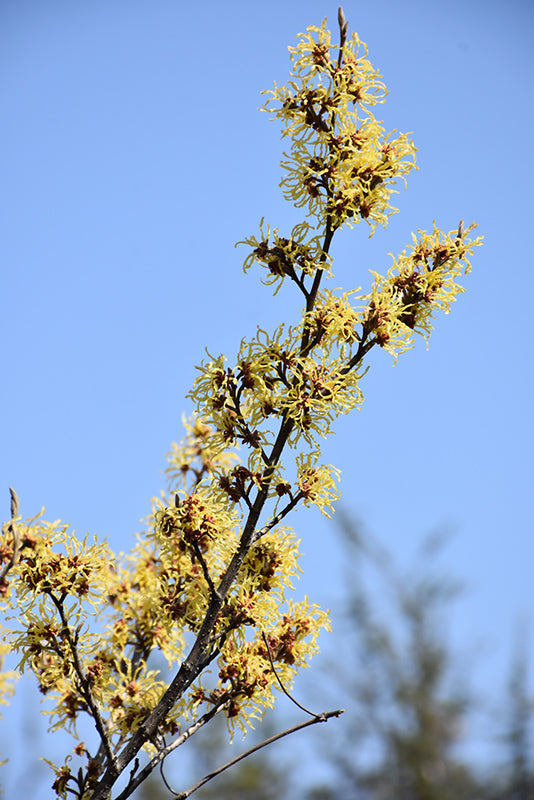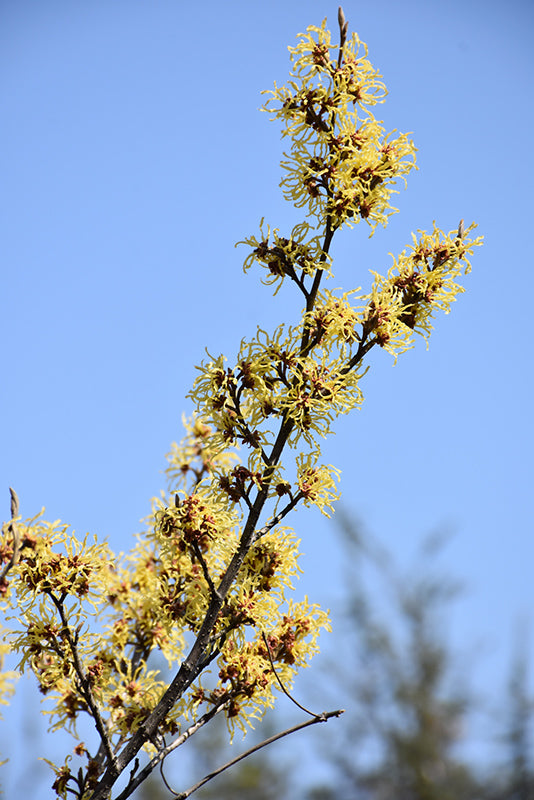Arnold Promise Witchhazel is bathed in stunning fragrant yellow strap-like flowers with red calyces along the branches from late winter to early spring before the leaves. It has green deciduous foliage. The serrated round leaves turn an outstanding yellow in the fall.
Landscape Attributes
Arnold Promise Witchhazel is a multi-stemmed deciduous shrub with a ground-hugging habit of growth. Its average texture blends into the landscape, but can be balanced by one or two finer or coarser trees or shrubs for an effective composition.
This shrub will require occasional maintenance and upkeep, and should only be pruned after flowering to avoid removing any of the current season's flowers. Deer don't particularly care for this plant and will usually leave it alone in favor of tastier treats. Gardeners should be aware of the following characteristic(s) that may warrant special consideration;
- Suckering
Arnold Promise Witchhazel is recommended for the following landscape applications;
- Accent
- Mass Planting
- Hedges/Screening
- General Garden Use
Planting & Growing
Arnold Promise Witchhazel will grow to be about 15 feet tall at maturity, with a spread of 15 feet. It has a low canopy with a typical clearance of 2 feet from the ground, and is suitable for planting under power lines. It grows at a medium rate, and under ideal conditions can be expected to live for 40 years or more.
This shrub performs well in both full sun and full shade. It is quite adaptable, prefering to grow in average to wet conditions, and will even tolerate some standing water. It is not particular as to soil type, but has a definite preference for acidic soils, and is subject to chlorosis (yellowing) of the foliage in alkaline soils. It is somewhat tolerant of urban pollution. This particular variety is an interspecific hybrid.
Details
Botanical Name
Hamamelis 'Arnold's Promise'
Common Name
Arnold Promise Witchhazel
Hardiness Zone
- 6b
Appearance
Max Height
15 feet
Max Spread
15 feet
Plant Form
Foliage Colour
- Green
Fall Colour
- Yellow
Flower Colour
- Yellow
Edible
Edible Component
Edible Harvest Period
Edible Use
Fruit Colour
Growing
Flowering Period
Late Winter to Early Spring
Moisture
Average to Wet
Sunlight
Full Sun to Full Shade
Maintenance
Occasional
Deer Resistance
YES
Get more information about this plant and others with our comprehensive plant finder tool.




